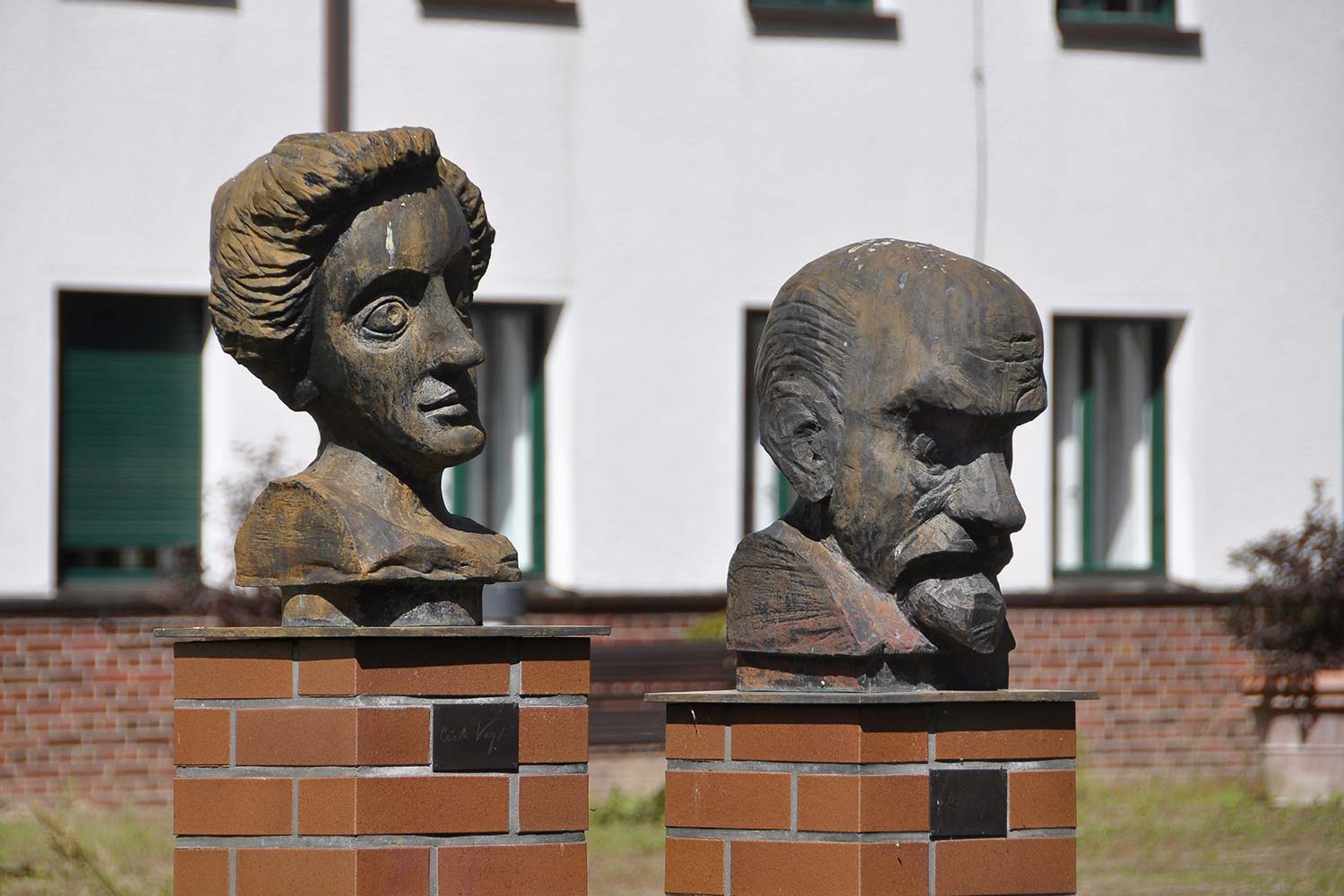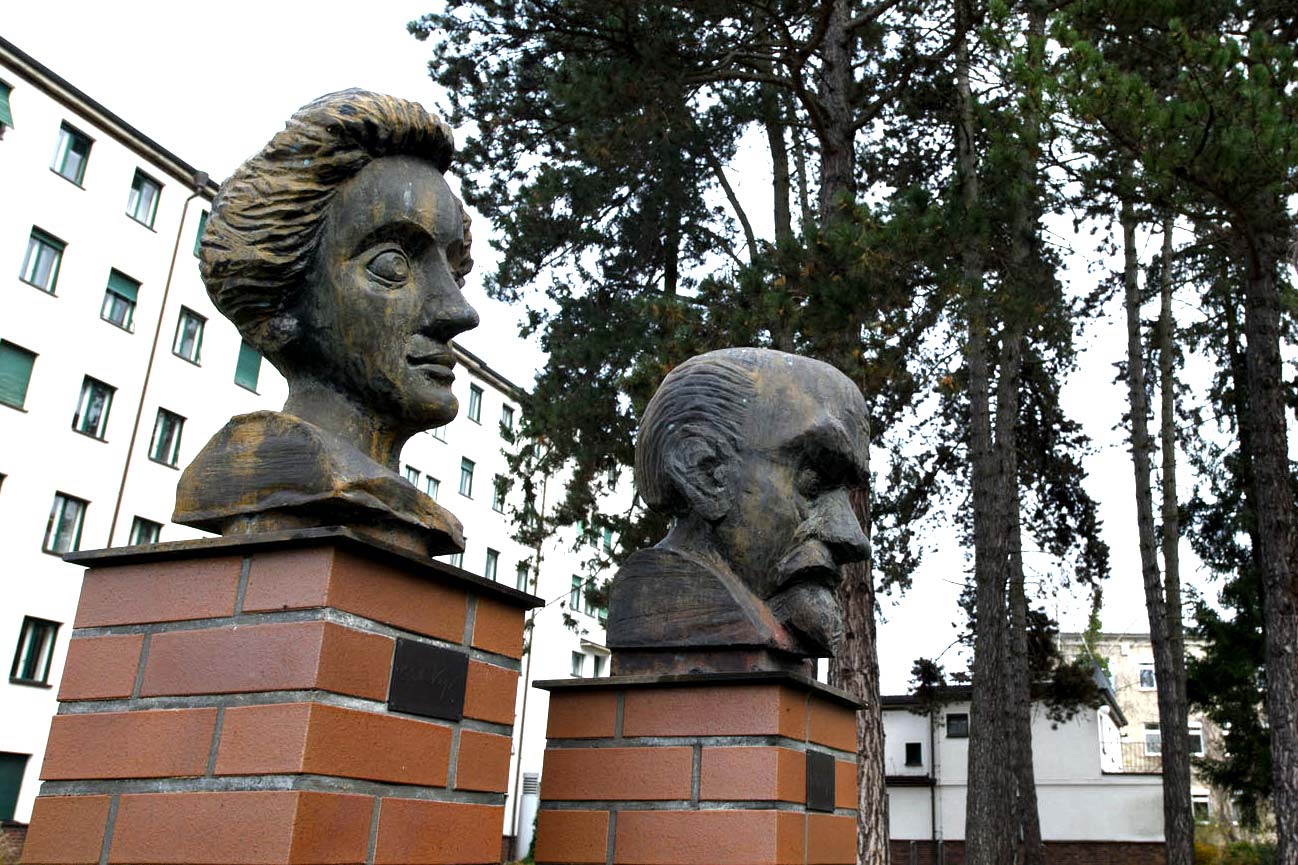13bCécile Vogt
March 27, 1875 in Annécy, France –
May 4, 1962 in Cambridge, England

Cécile Vogt was a physician and brain researchers who worked and published together with her husband Oskar Vogt throughout her live. They established the theory that a person‘s abilities can be discerned from the architecture of his or her brain. The couple were renowned for years of accomplishments and honors that they were mostly awarded together. Oskar and Cécile Vogt are considered co-founders of research into brain architecture in the early 20th century.
Cécile Mugnier was born on March 27th, 1875 in Annécy in France. She studied medicine, which was considered absolutely revolutionary at the time. In 1893 she was one of very few women to be admitted to the University of Paris for medicine.
It was here that Cécile Mugnier met the German guest researcher Oskar Vogt in 1898. She followed him to Berlin in 1899, where they married that same year. In a tenement house in Magdeburger Strasse (today Kluck Strasse) in the Tiergarten district, the young couple founded the private "Neurological Central Station", which was affiliated to the Physiological Institute of the University as the "Neuro-Biological Laboratory" only a few years after its foundation.
In 1914, their research facility became the Kaiser Wilhelm Institute for Brain Research, which initially continued to be located in Magdeburger Straße, and from the late 1920s onward in newly constructed buildings in Berlin-Buch.
Here, Oskar and Cécile Vogt devoted themselves to studies of the relationship between specific brain structures and the psychological and physical behavior of organisms. In their large brain collection, which served as a scientific database, they also collected so-called "elite brains" or brains of criminals in addition to brains of diseased persons.

From 1919, Cécile Vogt headed the anatomical department of the institute, a remarkable position for a woman of her time. Later, Oskar Vogt gained notoriety after studying Vladimir Ilyich Lenin's brain, which had been prepared in the form of 30,000 slices, between 1925 and 1927. The achievements of Cécile Vogt were mostly overlooked. She not only ensured that all the equipment was transported to Moscow, but also played a significant role in its preservation and preparation.
Cécile Vogt published numerous results of her research, often in joint publications with her husband, and very often as first author. A rare form of movement disorder is named after her as Vogt syndrome.
It was also Cécile Vogt who was primarily responsible for the brain collection in Berlin-Buch, directing the preparation of the exhibits and cataloging them. She also often personally guided the numerous visitors through the collection. It is probably also due to her that there were an unusually large number of women working at the Berlin-Buch campus at that time; she encouraged and supported female employees to the best of her ability.
Oskar and Cécile’s investigations into the functions of brain centers laid the foundation for an anatomical and functional mapping of the cerebral cortex, which is nearly complete today. At the time, this center was the world‘s largest institute for brain research. Oskar and Cécile Vogt headed the ”Architectural Brain Research“ department, where they searched for histological changes in the brains of patients with neurological diseases. This was a radical approach at a time when mental illnesses were considered disturbances of the soul rather than of the brain. As they searched for physiological explanations for neurological and psychiatric disorders, Oskar and Cécile Vogt were also interested in hereditary influences. In 1937/38 they published the results of their extensive investigations in a work on the ”Location and nature of diseases in the light of topistic brain research“.
Even though Oskar Vogt had been appointed institute director for life, he only headed the institute until 1937.
The Vogts were a bogeyman for the National Socialists in many respects; among other things, they were accused of having ties to the Soviet Union. But the fact that they employed many Jewish and international employees, that Cécile was from France, and that as so-called "double earners" they did not fulfill the Nazi family concept also contributed to the attacks and harassment.
The Vogts left Berlin and set up a new research facility in Neustadt in the Black Forest, again with the support of the Krupp family and the Rockefeller Foundation. Here Oskar and Cécile Vogt worked together until old age.
After the death of Oskar Vogt in 1959, Cécile Vogt's achievements were increasingly forgotten, although an obituary still stated: "Cécile Vogt was the first woman to achieve world fame in the field of brain research". She left Germany and spent her last years with her daughter Marthe in Cambridge, England. There Cécile Vogt died on May 4th, 1962.
Her and er husband's discoveries formed the basis for further work on the ”mind-body problem“. The topical brain research they conducted developed into dynamic localization theory.
Hans Scheib, Bronze, 2002